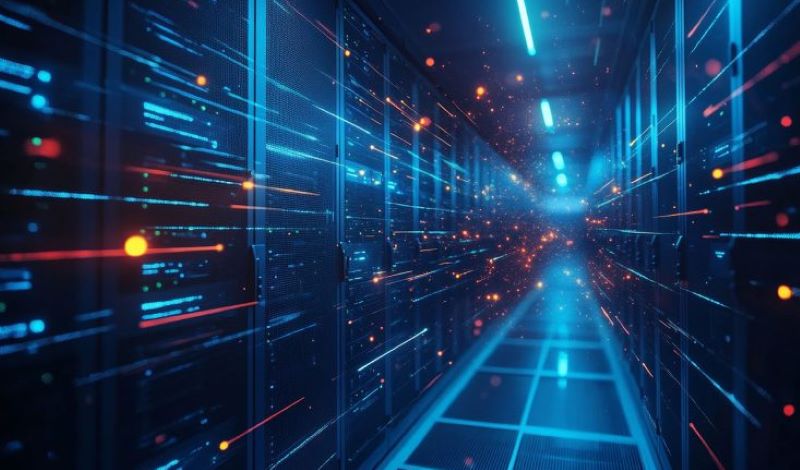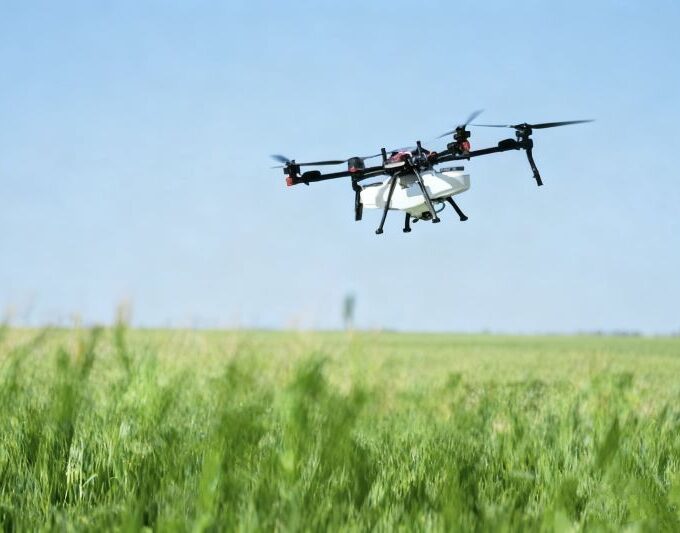Recently, the International Energy Agency (IEA) released a significant report that raises a red flag for both the global energy sector and the tech industry. The report clearly reveals that, driven by the rapid growth of artificial intelligence (AI), the electricity demand and carbon emissions from data centers are skyrocketing, a trend that will have profound impacts on the global energy landscape and sustainable development goals.
Surge in Data Center Electricity Demand Driven by AI
In today’s digital age, data has become a key driver of economic and social development. The rapid advancements in AI technology, such as the widespread adoption of applications like ChatGPT, have caused an explosion in the generation, storage, processing, and transmission of data. All of this heavily relies on the efficient operation of data centers, the “digital brain” of the modern world.
According to the IEA report, by 2024, global data centers’ electricity consumption will account for about 1.5% of global electricity demand, equivalent to approximately 415 terawatt-hours (TWh). While this figure is already significant, the more shocking statistic is the projected growth. By 2030, electricity demand from data centers is expected to more than double, rising to around 945 TWh, slightly higher than Japan’s total annual electricity consumption. The speed of this growth is staggering.
Research from Goldman Sachs further corroborates this trend. On average, the electricity required to process a single ChatGPT query is nearly 10 times that of a Google search. Since 2020, the improvement in data center efficiency has slowed, and as AI applications continue to expand, their electricity consumption has significantly increased. Goldman Sachs estimates that by 2030, electricity demand from data centers will grow by 160%.
Carbon Emission Concerns: Data Centers Becoming One of the Fastest Growing Sources of Emissions
As electricity demand from data centers continues to rise, the carbon emissions generated by power consumption also inevitably increase. Although data centers currently represent a relatively small share of global emissions, they are rapidly becoming one of the fastest-growing sources of emissions.
Morgan Stanley predicts that by 2030, carbon emissions from data centers could triple, with potential emissions reaching up to 2.5 billion tons of CO2. This forecast suggests that the tech industry will face enormous challenges in meeting global net-zero emissions targets, and it will pose a new threat to global energy security.
Some reports suggest that the actual emissions from internal data centers of tech giants like Google, Microsoft, Meta, and Apple may be as much as 662% higher than reported figures. This startling discrepancy highlights the seriousness and complexity of the carbon emission issues associated with data centers.
Localized Pressures: A Severe Challenge to Regional Power Grids

The rapid growth of data centers not only brings pressure to global electricity demand and carbon emissions, but its impact is even more pronounced in certain regions. In major economies like the United States, China, and the European Union, data centers’ electricity consumption already accounts for 2%-4% of total electricity demand. Due to the concentrated nature of data center locations, the impact on local power grids is especially severe.
In the United States, at least five states have data center electricity consumption that exceeds 10% of their total power use. In Ireland, this figure exceeds 20%. The electricity demand of large data centers is sometimes comparable to that of an electric arc furnace steel plant, and unlike steel plants, which are spread out, the concentration of data centers in specific regions exacerbates local power supply pressures.
The IEA report emphasizes that the rapid pace of data center construction is in stark contrast to the slower pace of electricity grid expansion and generation capacity enhancement. This mismatch is leading to situations in which some regions have already paused new data center contract approvals due to surging demand. For regions or countries affected by this, the continuing rise in data center electricity usage will significantly complicate efforts to meet climate goals.
Solutions: Sustainable Development Is Urgent
In response to the rising electricity demand and emissions from data centers driven by AI, all sectors of society are actively seeking solutions.
From a technological innovation perspective, on the one hand, continuous optimization at both the hardware and software levels is critical. For example, AI-related computer chips double in efficiency approximately every two and a half to three years. Modern chips consume 99% less energy to perform the same tasks compared to models from 2008. New cooling technologies are also being developed to reduce energy consumption from heat dissipation in data centers. On the other hand, innovations like digital twin technology are emerging. By creating virtual replicas of physical data centers, facility managers can more efficiently manage and optimize operations, reducing AI’s carbon footprint while enhancing power management, assessing heat dissipation, and achieving precise energy consumption control.
From a policy-making standpoint, governments and regulatory bodies need to quickly implement targeted policy measures. For example, they should define energy transparency standards for AI models, encourage base models to voluntarily commit to energy-efficient practices, and take the potential impacts on energy use into account when creating AI regulations.
From the perspective of tech companies, in addition to increasing investments in renewable energy, they should pay more attention to optimizing AI workloads from the source to avoid energy waste. Companies need to optimize and fine-tune AI models, invest in high-efficiency AI accelerator hardware, and use technological means to promote sustainable development in data centers.
As N Scale’s Chief Information Officer Elio van Puyvelde said, “Companies must take on environmental responsibilities while pursuing AI development. By using innovative technology to improve data center efficiency, the growth of AI does not necessarily have to come at the environmental cost. On the contrary, this shift will foster responsible innovation and reduce the need for endless data center construction.”
With the continuous progress of AI technology, data centers are playing an increasingly crucial role in the global energy system. The challenge now is how to meet AI’s growing demand for data centers while effectively controlling electricity consumption and carbon emissions, achieving sustainable development. This is not only critical for the future of the tech industry, but also for global energy security and the achievement of climate goals. It requires global collaboration to explore a balanced path forward.












